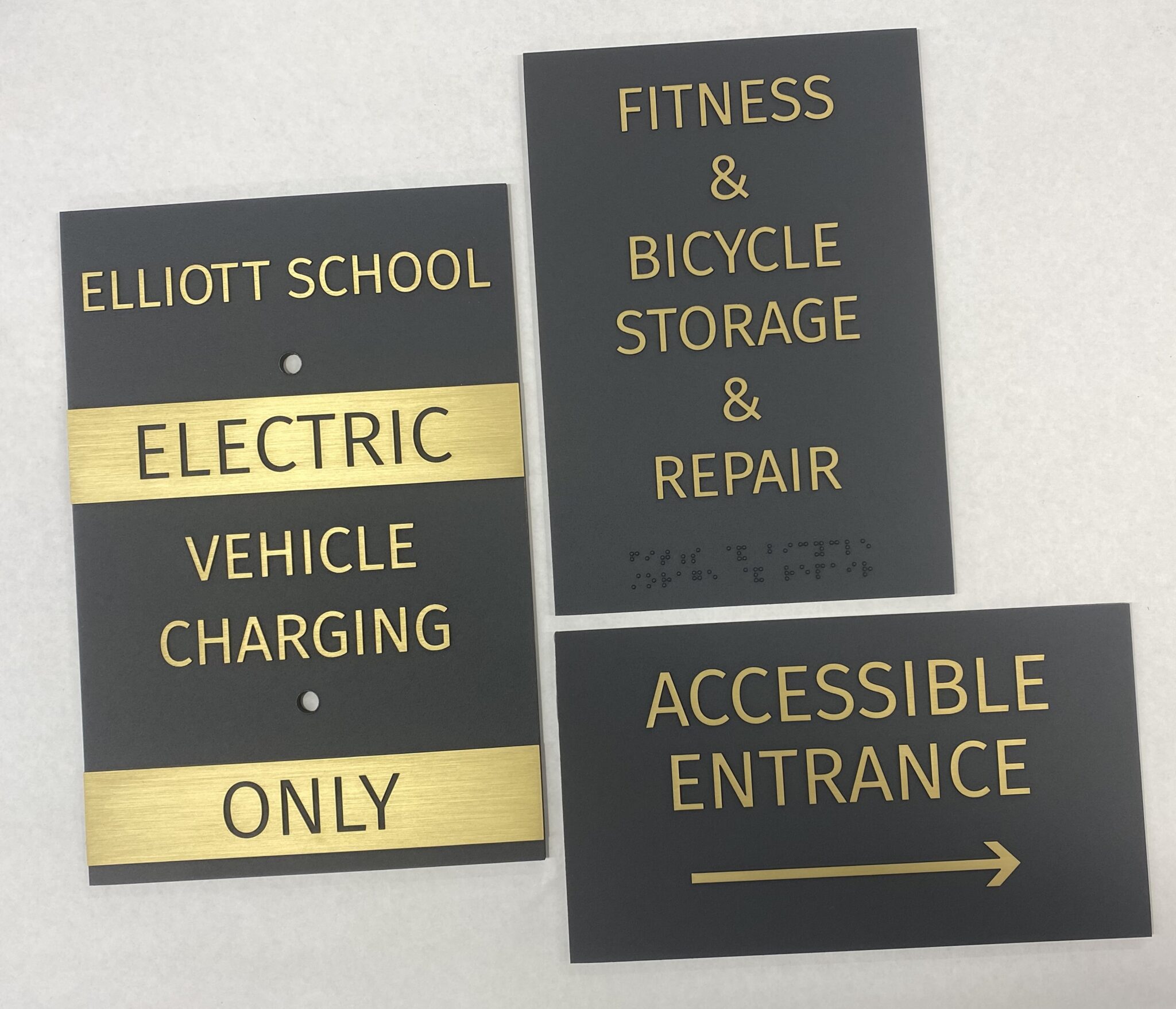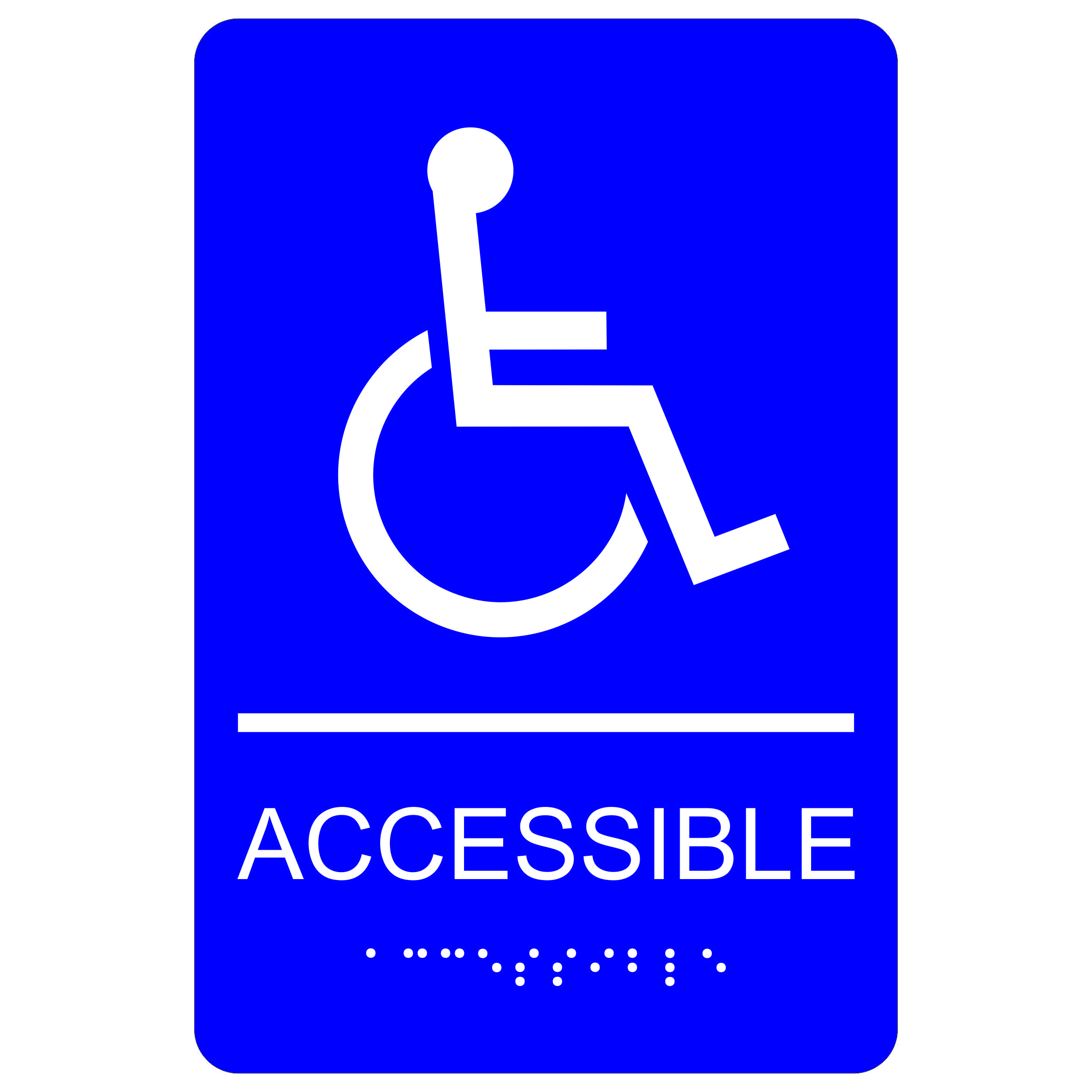Understanding the Laws Behind ADA Signs
Understanding the Laws Behind ADA Signs
Blog Article
Discovering the Secret Attributes of ADA Signs for Boosted Access
In the realm of access, ADA signs act as quiet yet effective allies, making certain that areas are navigable and comprehensive for individuals with impairments. By integrating Braille and tactile aspects, these indications damage barriers for the visually damaged, while high-contrast color pattern and understandable typefaces satisfy diverse visual demands. Their strategic positioning is not arbitrary but instead a calculated effort to facilitate smooth navigating. Yet, past these attributes exists a deeper narrative concerning the development of inclusivity and the continuous dedication to creating fair areas. What a lot more could these signs signify in our pursuit of global accessibility?
Value of ADA Compliance
Making sure compliance with the Americans with Disabilities Act (ADA) is essential for fostering inclusivity and equivalent gain access to in public areas and workplaces. The ADA, established in 1990, mandates that all public centers, employers, and transportation services fit people with handicaps, ensuring they delight in the very same legal rights and opportunities as others. Compliance with ADA standards not just fulfills lawful obligations but likewise improves an organization's credibility by demonstrating its commitment to variety and inclusivity.
One of the essential elements of ADA compliance is the implementation of available signage. ADA indications are designed to ensure that individuals with disabilities can conveniently browse via buildings and areas. These signs should abide by details standards relating to size, font, shade comparison, and positioning to ensure presence and readability for all. Properly executed ADA signage helps remove barriers that people with disabilities commonly run into, thereby promoting their self-reliance and self-confidence (ADA Signs).
In addition, adhering to ADA policies can mitigate the risk of prospective fines and lawful repercussions. Organizations that fail to follow ADA standards might face claims or charges, which can be both economically difficult and destructive to their public picture. Hence, ADA compliance is important to fostering an equitable setting for everybody.
Braille and Tactile Elements
The incorporation of Braille and tactile aspects into ADA signs embodies the principles of access and inclusivity. These functions are essential for individuals that are visually damaged or blind, enabling them to navigate public spaces with better freedom and confidence. Braille, a tactile writing system, is necessary in providing created information in a style that can be easily regarded via touch. It is generally positioned below the matching text on signage to guarantee that individuals can access the details without aesthetic support.
Tactile components expand beyond Braille and include elevated signs and personalities. These parts are created to be noticeable by touch, allowing individuals to recognize space numbers, bathrooms, departures, and other critical locations. The ADA establishes certain guidelines relating to the dimension, spacing, and positioning of these tactile aspects to maximize readability and guarantee consistency across different environments.

High-Contrast Shade Systems
High-contrast color schemes play a critical role in improving the exposure and readability of ADA signage for individuals with aesthetic problems. These systems are necessary as they make best use of the distinction in light reflectance in between text and history, guaranteeing that signs are conveniently noticeable, also from a range. The Americans with Disabilities Act (ADA) mandates the use of certain color contrasts to suit those with limited vision, making it a vital element of conformity.
The efficiency of high-contrast shades depends on their capability to stick out in different lights conditions, consisting of dimly lit settings and areas with glow. Usually, dark message on a light history or light message on a dark history is employed to achieve ideal comparison. For circumstances, black message on a yellow or white history supplies a raw visual difference that assists in fast recognition and understanding.

Legible Fonts and Text Size
When thinking about the style of ADA signs, the choice of legible fonts and appropriate text dimension can not be overemphasized. The Americans with Disabilities Act (ADA) mandates that typefaces should be not italic and sans-serif, oblique, script, very attractive, or of unusual form.
According to ADA guidelines, the minimal message height need to be 5/8 inch, and it should boost proportionally with watching distance. Uniformity in message size adds to a natural aesthetic experience, helping individuals in navigating atmospheres successfully.
Furthermore, spacing in between lines and letters is integral to readability. Sufficient spacing protects against personalities from appearing crowded, boosting readability. By sticking to Get More Info these criteria, designers can considerably improve accessibility, guaranteeing that signage serves its designated purpose for all people, despite their visual capabilities.
Efficient Positioning Methods
Strategic placement of ADA signage is necessary for taking full advantage of access and ensuring compliance with legal requirements. Properly positioned signs direct people with impairments effectively, facilitating navigating in public areas. Secret considerations include exposure, elevation, and proximity. ADA guidelines state that signs should be mounted at a height in between 48 to 60 inches from the ground to ensure they are within the line of view for both standing and seated individuals. This common height array is critical for inclusivity, making it possible for wheelchair individuals and individuals of varying heights to gain access to info effortlessly.
In addition, indications must be put adjacent to the lock side of doors to permit easy identification before access. This placement aids people situate spaces and spaces without obstruction. In cases where there is no door, indicators should be positioned on the nearest adjacent wall. Consistency in indicator placement throughout a facility improves predictability, lowering confusion and enhancing general individual experience.

Final Thought
ADA indications play a vital function in advertising accessibility by incorporating attributes that attend to the requirements of people with disabilities. Incorporating Braille and responsive elements ensures critical info comes to the visually damaged, while high-contrast color systems and legible sans-serif typefaces improve presence across numerous illumination conditions. Reliable positioning techniques, such as suitable placing heights and strategic areas, even more facilitate navigating. These aspects jointly cultivate an inclusive setting, underscoring the relevance of ADA conformity in making sure equal access for all.
In the world of accessibility, ADA indicators offer as quiet yet powerful allies, ensuring that areas are comprehensive and navigable for individuals with handicaps. The ADA, passed in 1990, mandates that all public facilities, reference companies, and transport solutions suit individuals with impairments, guaranteeing they delight in the exact same rights and opportunities as others. visit the website ADA Signs. ADA indications are made to make certain that people with handicaps can easily browse through buildings and rooms. ADA standards state that signs ought to be placed at an elevation in between 48 to 60 inches from the ground to guarantee they are within the line of sight for both standing and seated people.ADA indicators play an important role in promoting accessibility by integrating functions that deal with the demands of people with disabilities
Report this page